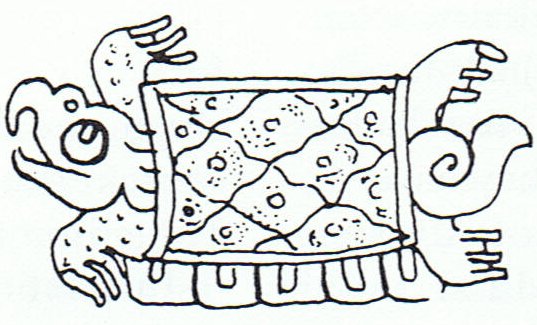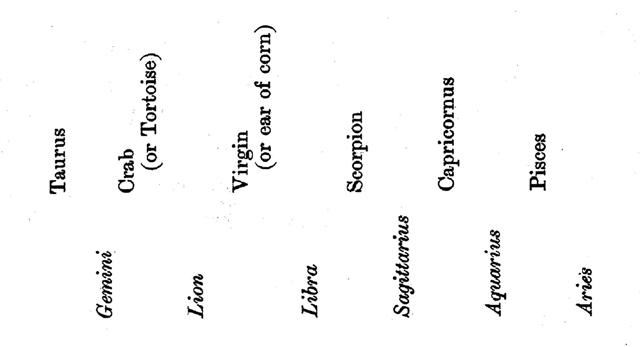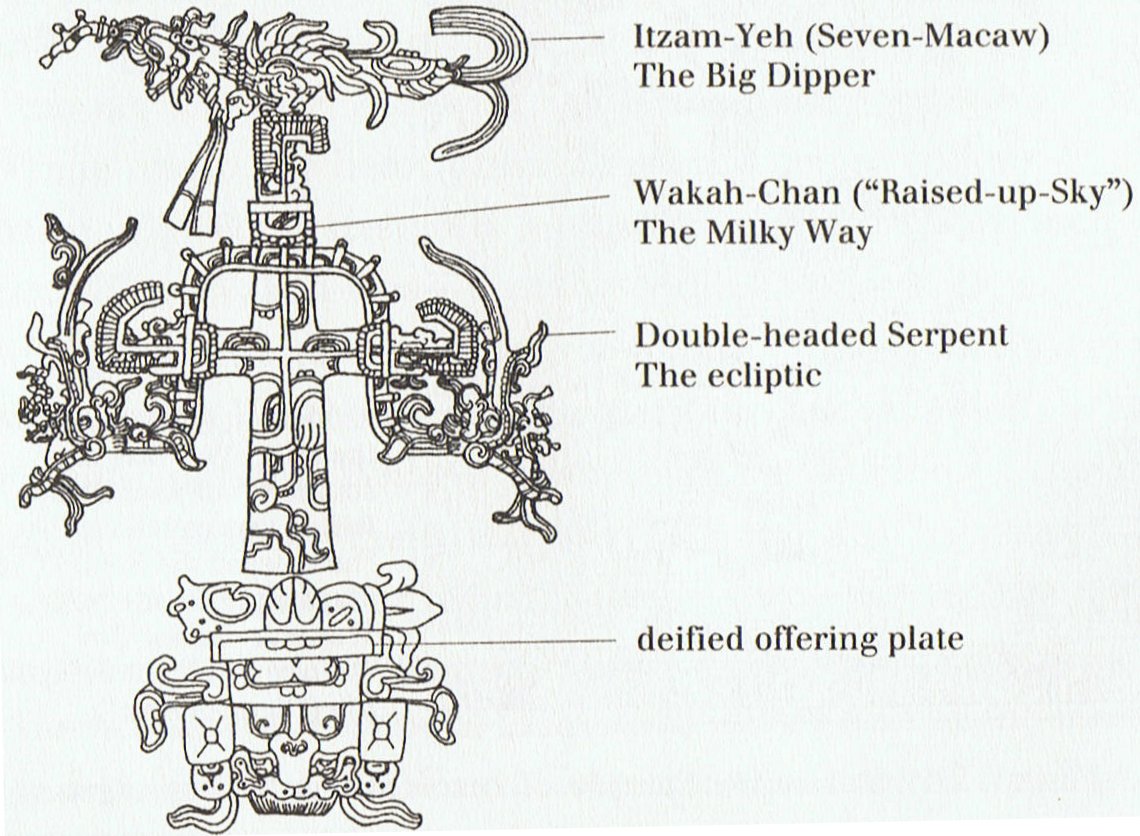After Tu had come alive there were multiplications:
According to the Moriori fishermen the first son of Tu was Rongo and he was July, a cold month. Then came Tane, the 2nd of 19 sons of Tu. Each son / month could have covered 20 days. 18 * 20 + 5 = 365, i.e. the last son Whatonga (4-South) could be of short duration. ... The Gilbert Islanders are Polynesians, having emigrated, according to their traditions, from Upolu, Samoa, which they look upon as te buto (Maori pito), the Navel of the World. They never counted the nights of the Moon beyond the twentieth, so far as Grimble was able to ascertain, and in the vagueness of their lunar calendar bore no resemblance to their Micronesian neighbors of the Carolines ... One of the names for east, Makai-oa, was said to be the name of a far eastern land, not an island, which their navigators had visited in ancient times. Tradition called this great land 'the containing wall of the sea, beyond the eastern horizon, a continous land spreading over north, south, and middle, having a marvelous store of all sorts of food, high mountains and rivers'. It was also called Maia-wa (wa being 'space, distant'). This is a clear reference to ancient voyages to the American coast from which the Polynesians are thought to have introduced the sweet potato into the Pacific area. The similarity of Maia to Maya may be more than a coincidence ... Perhaps beyond the reign of Jupiter (Father Light) would come the land of Man, ruled according to the Moon calendar. Ga3-10 has at left a tagata vero which ought to indicate a change:
The short season with the narrow rising string in front of henua was over; could it correspond to Whatonga - death of Toga?
Basically, I have said, the text should be coordinated with the heliacal star positions at the time of rongorongo. These were not those according to the Gregorian calendar but 4 days later in the year, because precession had moved the stars ahead since the time of Gregory XIII. Next, the significant heliacal stars should be judged as to their meaning by going back to the Golden Age, to where they were when the celestial images were created. Cancer, as we say, may at that ancient time have been a Turtle (Honu), a creature with a hard shell.
... I think I am right about the Tortoise, for I find the following passage in Jensen, p. 65, where he notes the absence of the Crab: ‘Ganz absehend davon, ob dasselbe für unsere Frage von Wichtigkeit werden wird oder nicht, muss ich daran erinnern, das unter den Emblemen, welche die sogenannten 'Deeds of Salè' häufig begleiten, verschiedene Male wie der Scorpion so die Schildkröte abgebildet gefunden wird’ ... ... In Polynesia the tortoise personified the war god Tu. Drawing tattoo marks of a tortoise was a custom among warriors. In a story from Admiralty Island, people are born from eggs laid by the World Turtle. There are many similar creation stories throughout Polynesia ... The arrival of the World Turtle of Man (Tu) was, it appears, accompanied by a kind of vaha mea (red opening), to be compared with those at heliacal Aldebaran and at heliacal Sheratan:
The outline of the figure in Ga3-13 has, however, been drawn incomplete. Half its 6 limbs are cut off. Possibly it meant there was another correlation than with a ruling heliacal star. August 4 (216) could have been the reason. 68 + 68 = 136 = 216 - 80. Another reason could have been nakshatra ν Aquarii at the opposite side of the sky compared to ξ Cancri: ... This was the place at the opposite side of day 400, when ν Aquarii rose with the Sun. However, ξ Aquarii (Bunda) came a week later: ... β and ξ also constituted the Persian lunar station Bunda and the similar Coptic Upuineuti, the Foundation; but β alone marked the sieu Heu, Hiu, or Hü, Void, anciently Ko, the central one of the seven sieu which, taken together, were known as Heung Wu, the Black Warrior, in the northern quarter of the sky. It is found in Hindu lists as Kalpeny, of unknown signification. On the Euphrates it was Kakkab Nammaχ, the Star of Mighty Destiny, that may have given origin to the title of the manzil [Al Sa'd al Su'ud], as well as to the astrologers' name for it - Fortuna Fortunarum. Al Firuzabadi of Khorasan, editor of Al Kāmūs, the great Arabic dictionary of the 14th century, called some of the smaller stars below this Al Au'ā, the plural of Nau', a Star, but without explanation, and they certainly are inconspicious ...
I think there could have been a traditional rongorongo Moon calendar originating from the time of Julius Caesar. For instance would then the beginning of side a of the tablet have been at 'April 28 (118) = May 25 (145) - 27. 118 is half 236 = 4 * 59. In July 6 (true time) the heavy lode stone (heart star) Wezen at the back bone of Canis Major would have risen with the Sun 107 days counted from 0h. These 107 days were similar to 80 days from January 1 to 0h with 27 added for the precessional shift of the First Point of Aries:
Sheratan was rising with the Sun in April 17 (107) and July 6 (187) = 80 + 107. Eliminating the precessional shift of 27 days the equation would instead be: 'March 21 (80) + 80 = 'June 9 (160). This was the last day before 'June 10: ... Midsummer is the flowering season of the oak, which is the tree of endurance and triumph, and like the ash is said to 'court the lightning flash'. Its roots are believed to extend as deep underground as its branches rise in the air - Virgil mentions this - which makes it emblematic of a god whose law runs both in Heaven and in the Underworld ... The month, which takes its name from Juppiter the oak-god, begins on June 10th and ends of July 7th. Midway comes St. John's Day, June 24th, the day on which the oak-king was sacrificially burned alive. The Celtic year was divided into two halves with the second half beginning in July, apparently after a seven-day wake, or funeral feast, in the oak-king's honour ...
|
|||||||||||||||||||||||||||||||||||||||||||||||||||||||||||||||||||||||||||||||||||||||||||||||||||||||||||||||||||||||||||||||||||||||||||||||||||||||||||||||||||||||||||||||||||||||||||||||||||||||||||||||||||||||||||||||||||||||||||||||||||||||||||||||||||||||||||||||||||||||||||||||












